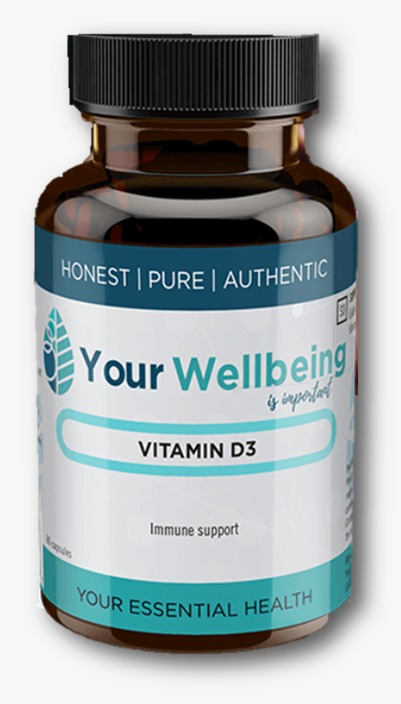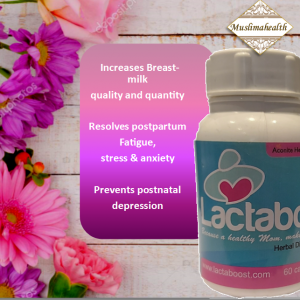R150.00
12 Veg Capsules
Adults and children over 12 yr take 1 cap 1xs weekly
Only to be taken regularly if proven vitamin D deficiency
Description
VITAMIN D is one of several forms of Vitamin D. functionally, Vitamin D3 can be classed as a hormone. Research has shown that most individuals are no longer getting enough sun exposure to meet their vitamin D requirements. Vitamin D is believed to support healthy immune function and general cellular support, including breast and prostate tissue
The numerous benefits of Vitamin D3 are becoming more well known and its involvement in many of the body’s vital processes is now being recognised.
But you’re probably wondering Should I be taking Vitamin D3?
What is Vitamin D3 & What Does it Do?
Vitamin D3, sometimes known as the ‘sunshine vitamin’ is produced naturally in the skin when it is exposed to sunlight. You can also get it through certain foods.
Although classified as a vitamin, D3 cleverly transforms into a hormone in the body and circulates in the bloodstream to help in the absorption of calcium and phosphorous. This is perhaps one of the most vital functions that Vitamin D3 performs.
We know that calcium builds and strengthens teeth and bone mass and is vital for bone development and growth. In addition, Calcium plays a role in the production of hormones in the body by transmitting nerve impulses to the brain.
Almost 99% of your Vitamin D supply is used for regulating the calcium in the body; the remaining part is utilised for strengthening the immune system and maintaining muscle strength.
What is Vitamin D3 Good For?
Aside from regulating the amount of calcium and phosphorus in our blood, Vitamin D3 benefits our overall health and wellbeing.
Getting sufficient Vitamin D contributes to the healthy function of our immune systems, improving resistance against certain diseases. It also plays a role in the process of cell division as well as ensuring the maintenance of healthy bones and teeth.
Where does Vitamin D3 Come From?
Vitamin D comes from three major sources:
The Sun
Whilst we can get Vitamin D3 from sunlight, it’s a balance between staying safe in the sun and getting enough Vitamin D3.
It’s also difficult to know exactly how much time you need to spend in sun to make enough Vitamin D for your body, taking into account skin colour and how much skin is exposed for example.
Food
Vitamin D rich foods include oily fish such as salmon, mackerel, herring and sardines, as well as red meat and eggs.
It is also added to all infant formula milk, as well as some breakfast cereals, fat spreads and non-dairy milk alternatives. Although may only be added in small amounts.
Supplement
Your Wellbeing Vitamin D3 has excellent bioavailability in the oral supplement sector. Translated this basically means the proportion of a substance which enters the circulation in the body and is able to have an active effect.
Why is Vitamin D3 Better Than Vitamin D2?
Vitamin D comes in two forms, Vitamin D2 – ergocalciferol, and Vitamin D3 – cholecalciferol. Some controversy has arisen whether Vitamin D2 is as active as vitamin D3 when it’s ingested.
What’s the bottom line?
The consensus is that D3 is two to three times as potent in raising the level of 25-hydroxycholecalciferol (that’s the chemical name for Vitamin D3).
The main difference between them is where they come from and how they are made:
Vitamin D2 is produced by plants, whereas Vitamin D3 is most commonly found in humans and animals. It’s the biologically active version of the vitamin, produced in our skin when exposed to sunlight.
Vitamin D2 is cheaper to produce, so when you see certain foods fortified with vitamin D, such as cereals or orange juice, it’s almost always done so with vitamin D2. However, it’s considered a lower quality source of vitamin D.
Although you need both types, Vitamin D3 is considered as a higher quality source of vitamin D and more important to our wellbeing.
What is a Healthy Level of Vitamin D3?
The recommended daily maintenance dosage is 400IU daily (or 10mcg) as outlined in the NICE (National Institute for Health and Care Excellence) guidance.
For children: the NHS advises that babies up to the age of one year need 8.5-10µg of vitamin D a day. From one year of age, this goes up to 10µg a day for children.
Nutritional adequacy for Vitamin D is based upon the measurement of the metabolite 25-Hydroxyvitamin D. Leading experts recommend that 25-Hydroxyvitamin D concentrations should be at least 75-80 nmol/L (30-32 ng/mL).
If you work inside or are one of the many office workers then it can be tricky to maintain a healthy level of Vitamin D3.






